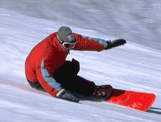

|
Fitness Article
of the Month This Months article focuses on rest. Many training plateaus could be avoided by giving muscle groups adeqate recovery. Credit goes to Wayne Girdlestone and Balance online. Best of Health. RM Rest and
Recovery We know that exercise is supposed to leave us feeling on a high, good and healthier. Well sometimes it can seem to have the opposite effect. The problem is when you combine a busy family life style, full/part-time employment or study, and exercise at least three times a week. Rest is the last thing on our minds, but we forget that an important part of the 'wellness equation' is REST. There are two kinds of rest; one is the kind where we take a break from a stressful situation or activity. The other is the kind we take in the horizontal position at the end of the day or when it becomes dark. Adequate rest and sleep are essential to any person who is using exercise as a tool to a healthier life style. Many people can survive on five or six hours' sleep a night, but few can thrive on it. Most people require a minimum of seven or eight hours' sleep a night and this may increase to ten or twelve hours a night when undergoing any form of strenuous activity. Rest can be achieved by sitting in front of the TV or lying in bed reading. It has been said that it is possible to condition yourself to live with less sleep, just as it is possible to live with less food. This may be true, but in both cases there is usually a high price to pay. People involved in a regular exercise regime must have a comprehensive understanding of how the body reacts to the demands of physical activity. The sympathetic nervous system that controls the 'fight or flight' reaction causes an adrenaline rush, increased heart rate, stroke volume and broncho-dilation. Meanwhile blood is being shunted away from the gastro-intestinal organs to enhance the flow of blood to the muscles, and energy pathways are being controlled to provide glucose to the muscles. After the cessation of exercise, the automatic effect should reverse to allow muscles to relax and the body to replenish its glycogen stores. If, however, there is insufficient recovery of the nervous system, the sympathetic system will still be aroused, causing an increase in the resting heart rate, poor appetite, muscle tiredness and inability to sleep. It is for these reasons that when training you should plan for one or two days between workouts to avoid overtraining. Training this way enables your muscles to fully recover, because during the rest and recovery phase they regain their strength and rebuild to a higher capacity. If your exercise sessions are too close together muscles will fatigue and become weaker, and this despite your best efforts. On the other hand if your workouts are too far apart, the muscles will lose all the benefits they would have gained. Many of you may not agree with resting between workouts, but it is interesting to note that experiments on dedicated strength trainers who were working out for three hours a day for six days a week. They had their training reduced to twenty minutes a day of high intensity exercise three times a week and showed a 5lb muscle gain during the first month of the new training regime. This fitness article is for educational purposes only. It is not medical advice and is not intended to replace the advice or attention of health-care professionals. Consult your physician before beginning or making changes in your diet, supplements or exercise program, for diagnosis and treatment of illness and injuries, and for advice regarding medications. Thanks. RM |
|
Copyright 2001, Ron McConnell. All rights reserved. |
